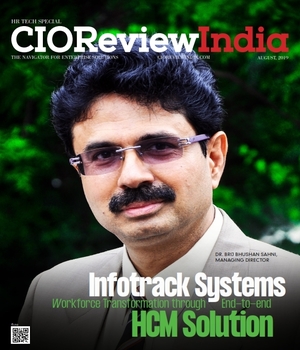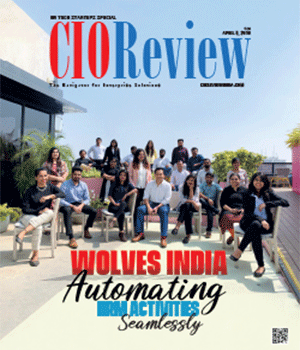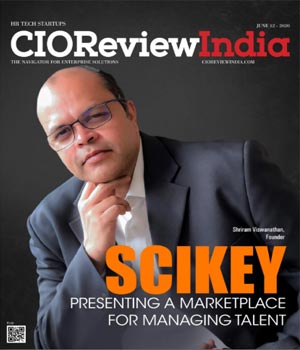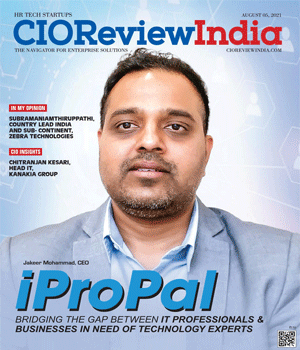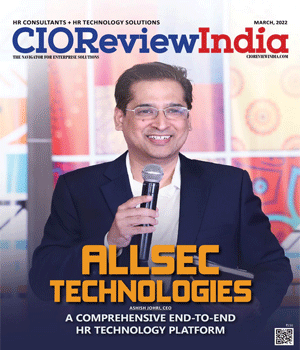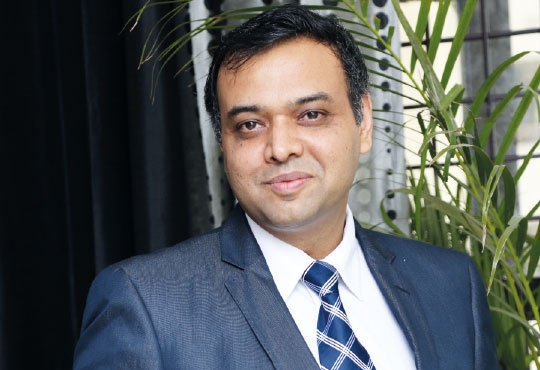
New Trends in Payroll Processing
Ruchira Bhardwaja, Chief Human Resources Officer, Future Generali India Life Insurance Company Ltd. | Wednesday, 29 May 2019, 06:26 IST
 Technology has completely redefined the role of Human Resources all over the world. We are now slowly migrating to the digital realm as technology increasingly plays a more integral role in our lives. We are lucky to be a part of an era where technology adds to our efficiency. With the help of this technology, HR can now focus on behaviours and things more ‘humane’ in nature. We are blessed with access to new tools which save us hundreds of valuable hours which can be better utilised in taking care of our most important resource: people.
Technology has completely redefined the role of Human Resources all over the world. We are now slowly migrating to the digital realm as technology increasingly plays a more integral role in our lives. We are lucky to be a part of an era where technology adds to our efficiency. With the help of this technology, HR can now focus on behaviours and things more ‘humane’ in nature. We are blessed with access to new tools which save us hundreds of valuable hours which can be better utilised in taking care of our most important resource: people.
These new tools are available across different touch points in employee life cycle; Payroll Management being one of them.
Payroll Management, traditionally, is the process of the administration of a company’s employees’ financial records. This would include details of the employee’s salaries, incentives, bonuses, deductions, and net pay. A company has to maintain and keep these records in accordance with the law of the country/countries that it operates. In today’s time however, just paying salary & bonus is not enough. The new-age definition of Payroll Management now is evolved to include many more things as mentioned below:
“The pace of innovation in HR is accelerating; payroll is becoming a more seamless process”
The Essentials in today’s world
There are four primary areas that a robust payroll system should focus on:
Getting the bare basics right:
One cannot emphasize more on the fact, that, if there is one thing your payroll system should be then it has to be, ACCURATE. In industries like ours, there is a high turnover of employees, the payroll system hence has to be extremely robust to capture this on a real-time basis. The system needs to manage and capture employee information without compromising on quality and accuracy. In sales-intensive industries, a simple thing like marking attendance can become very challenging. Newer technologies like geo-tagging can help address this issue. The data can be stored in a system and linked to the payroll software that can use this data to calculate attendance days, overtime, etc. Another critical basic is ensuring data safety. Most organization keep their data well protected, the real challenge comes in making this extremely classified data accessible at the right time.
Integration & Consolidation:
Opting for a single ERP vendor has its sets of positives and negatives but in my opinion the advantages surpass the negatives by a good margin. If you are a mid-market company it makes sense to evaluate this option to get a range of customizable options in an interface friendly and affordable cost. We as an organization personally believe in the power of small and upcoming service providers, it is them, who innovate to provide trusted, customisable solution to customers like us.
Real-time gratification:
We have multiple people & services we need to pay for, instantly. Unlike before, when payment to all employees was made at a fixed time of the month, today different employees and stakeholders might be paid at varying periods. Employees can engage with an organisations on a fixed basis, on a flexible basis and even on an hourly basis. The payroll system should be nimble enough to have this facility to ensure instant gratification to interns, part timers, free lancers, consultants etc. This is also where the integration aspect of the business comes into play. Integrating this with mobile apps ensure recognising the work done by somebody, instantly adding a delight factor to the experience of working with your organization.
Agility:
The current business environment in our country is extremely dynamic. It is a function of various socio-economic and political changes. Employment structures are rapidly changing (case in point – gig workers) and the corporate world is going through a metamorphosis. Adding to this, some of us also work in highly regulated industries. All these reasons require the payroll system to be extremely agile to accommodate the law of the land in different geographies throughout the operating regions. The payroll system should be agile enough to be able to adapt to the changing environment. It should also be able to quickly incorporate newer regulatory guidelines. Legacy systems find it difficult to respond to these changing employment structures. Manual processing simply cannot be flexible enough to respond to such rapid change in a timely and efficient manner. However, technology can help design payroll processing systems that have a quick response time. Another major benefit of a technologically enhanced payroll system is its ability to shift through reams of data that can be analysed to generate customised reports. These can help companies better understand their businesses and enhance their ability to manage their people.
To sum it up, the pace of innovation in HR is accelerating; payroll is becoming a more seamless process. Paying employees on time and consistently is a basic, what we need is movement from ‘system of records’ to ‘system of engagement’. It is time to move from Human Resources to Human Resources 2.0
CIO Viewpoint
Is Business Intelligence (BI) using Analytics...
By Lalit Popli, Head of Information Technology, ICICI Prudential AMC
How Disruptions in Internet of Things to Impact...
By Dalveer Singh, Head IT, Sentiss Pharma
HR Tech: It is Not Only About HR
By Babu Thiagarajan, Head - Technology, Fidelity International, India
CXO Insights
Digitalization in HR Operations
By Jaishankar Balan, Head, Human Resources at Bharti AXA Life Insurance
People Analytics: Critical to driving Business...
By Manan Jain, Lead- HR People Partner & Experience, India, YASH Technologies
Components Of Strategic Management Model


